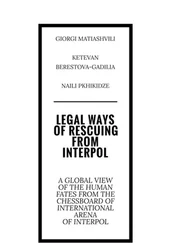During the period while the indictments had been hanging over him, Meyer had, upon advice of counsel, eschewed all extramarital relationships. Now he began to make up for lost time. Between his amatory pursuits and the time consumed in trying to find a way of doing away with his wife without getting caught, Dr. Meyer had little time for his practice. The result was that it began to fall off. Women still took money. Meyer was not only broke; he was deeply in debt.
Then one day — two years after his marriage to Ida Geldermann — a big plumber named Peter Bretz came into his office. Meyer saw at once that Bretz, none too bright, was an ideal hypnotic subject.
Dr. Meyer took Bretz home to dinner that night. He had given his wife a big build-up to Bretz. The plumber was immediately smitten by the woman. As weeks wore on, Meyer saw to it that Bretz and his wife were almost constantly in each other’s company. He got Bretz more and more in his power until the man was a mere puppet. Playing both ends against the middle, the hypnotic plotter began to work on his wife, too. He had been unable to hypnotize her out of her money, but by suggestion he had her believing she was in love with Bretz. This was all like something that you would expect to read in a badly overdrawn piece of horror fiction. Yet it was one day all to be put down in cold black-and-white courtroom testimony, with the victims admitting that that had willingly accepted the hypnotic attempts of the doctor.
When Meyer had his two pawns just where he wanted them, he planted the seed of murder in Bretz’s mind. Bretz, with money Meyer had obtained through performing an operation, was to run off to Colorado with Mrs. Meyer. When he got her there, he was to show her the Grand Canyon. Then, when nobody was looking, Bretz was to shove Mrs. Meyer over the canyon edge. The two subjects left for Colorado. Meyer would be safe from all suspicion this time. People would say that his wife had gotten just what she deserved for running off with one of her husband’s patients.
Day by day, Dr. Meyer looked in the newspapers for some word of the accident in Colorado. He was still looking, in vain, when two men from the State’s Attorney’s Office dropped in on him. Peter Bretz, it developed, had come out of the hypnotic spell when he was on the edge of the Grand Canyon, all set to push Mrs. Meyer to her death. He had returned to Chicago with the woman and they had gone to the authorities and told the incredible story.
Although Dr. Meyer was quickly indicted for attempted murder, the lawyer O’Brien got him released long enough to perform a series of operations, and thus to realize enough cash to finance his legal battle.
O’Brien knew how to handle certain cases, and he liked this one. Bretz’s story, although quite true, had a basically improbable ring to it since the public knew virtually nothing about hypnotism around the century’s turn. Yet the State’s Attorney had no choice but to put Bretz on the witness stand; that was the only way he could establish the case against the little cinnamon-haired fiend.
Putting Bretz on the stand was like putting the fat in the fire. By the time O’Brien was through cross-examining Bretz, the jury somehow had the feeling that Bretz had hypnotized Dr. Meyer instead of the other way about. So the physician, throwing an Inverness over his trim little frame, walked into a Chicago winter twilight a free man.
Ida Geldermann-Meyer had by this time concluded that her marriage to the doctor was unlikely to turn out successfully. So she divorced him. Despite his second acquittal, the little plotter was in ill repute throughout Chicago.
One bright spot in the otherwise dark picture was a ravishing young red-haired admirer named Mary Dressen. She had attended the physician’s latest trial, become enamored of him and written him mash letters.
Mary Dressen was the first woman Meyer had ever met who made him lose his desire for other women. Even Meyer himself could hardly believe that his sex life was at last stabilized. Mary, a thin little thing — but not too thin — was a demanding creature. Meyer didn’t want to take any chances on losing her. So he married her. He forged the name of another doctor to a check and went to the Grand Canyon, of all places, on his honeymoon with Mary. When he returned, the police were waiting for him. He had been indicted for forgery.
O’Brien wore a reluctant air as he listened to Meyer’s plea that he take the case. Just as O’Brien had suspected, Meyer not only had no cash, but had no prospects of getting any. The solicitor shook his head gravely from side to side. Forgery, he said, was a most serious offense, and he feared there was nothing for Dr. Meyer to do but go to jail. So he went.
In jail, where he was to do a year, Meyer met two men who fitted into his future plans. Both were serving terms for drunkenness. One was a tall, lanky man of thirty-five, named Carl Mueller, who was called the Professor because he was a beer-hall pianist and had long hair. The second was a sawed-off brewery-wagon driver of indeterminate age named Gustav Baum. Meyer’s plans for the future were simple. They were based on his need for a large amount of cash with which to take a world tour with his third wife, who visited him regularly in jail. The idea was an insurance fraud.
Professor Mueller, Gustav Baum and Meyer and his wife were to go to New York and establish fictitious backgrounds for themselves. Mrs. Meyer was to resume her maiden name and go through a marriage ceremony with Baum, a marriage that was never to be actually consummated. Baum, posing as a rich real-estate operator, was to take out $100,000 worth of insurance in various companies, naming his wife as beneficiary. Professor Mueller, set up in a fancy-looking music studio, was to pose as a long-standing friend of the insured man. So was Dr. Meyer, who was going to resume practice in Manhattan, where nobody knew anything about him. Meyer and Mueller would satisfy the insurance companies of the validity of Baum’s claim that he was a big-timer to whom $100,000 in insurance would be a natural thing. After a respectable amount of time had elapsed, Dr. Meyer, as Baum’s physician, was to notify the insurance companies that his friend and patient had died of complications. Meyer, through his professional connections, was to get a cadaver and palm it off on the insurance company’s adjusters as Baum. Then, when the $100,000 was paid to the beneficiary, everybody would split and leave town. It was an ingenious plot, and all of the actors in it liked their parts. Baum, Mueller and Meyer were all released about the same time. Meyer passed some more bad checks to finance the trip to New York. Then everybody left town.
Baum and his wife-in-name-only were rented a beautifully furnished apartment on East 13th Street, near Fifth Avenue, for the benefit of insurance salesmen and examining doctors. It was during this very first phase of the goings-on that the plot got out of hand. Baum, an uncouth man, tried to consummate the marriage. Mary rebuffed him, then reported him to Meyer. The doctor, outrageously jealous, made a mental note of Baum’s reprehensible behavior.
Almost a year later, Meyer told Professor Mueller that the plot was reaching its climax. He said, he had, notified the insurance companies that Baum was dead. He requested that the Professor come to the flat on 13th Street and identify a cadaver from a medical college as that of Baum.
Mueller looked at the body.
“That ain’t a body from a medical college,” he said, startled. “It’s Baum hisself.”
There was nothing, Meyer pointed out, that Professor Mueller could do about it. Next, Meyer called in Mary.
“I poisoned him,” he told her. “I thought you would be glad because of how he treated you.”
A fortune was in the offing. Meyer sent out for a case of champagne. He and Mary and the Professor were a little unsteady on their feet when an adjuster from one of the insurance companies walked in on them. A champagne party, in the opinion of the adjuster, was hardly a way for the widow and two closest friends of the deceased to exhibit their grief.
Читать дальше












